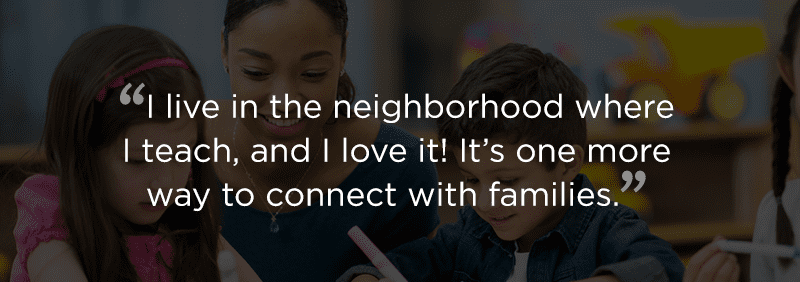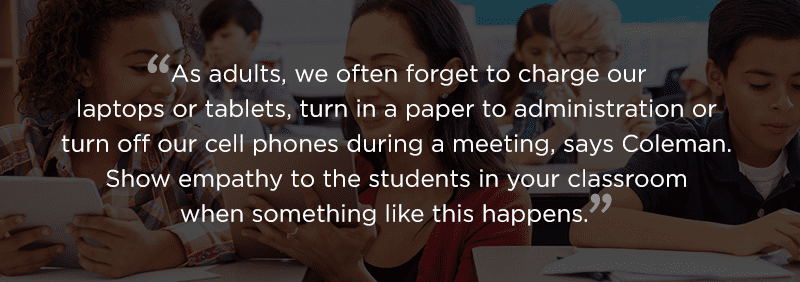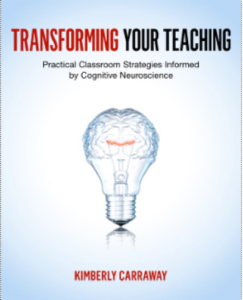Everyone can use advice from a trusted friend, relative or colleague from time to time. Whether you’re taking up a new hobby or honing your skills at work, it makes sense to learn from people who have a lot of experience. That’s why we recently sat down with a group of veteran teachers to hear some of the best classroom tips, tricks, and techniques they’ve learned over the years. These wise owls have more than 100 years of combined experience to share. You’re welcome!

Image credit: Facebook.com
Ann Boles is the second grade team leader at Harrington Elementary in Plano, Texas, and has 15 years experience teaching.
- Teach the way you drive. “Teaching is like driving,” says Boles. “You must constantly be aware of what’s going on all over the road/classroom. You must keep one eye on the kids logging on to the computer and one eye on the kids doing flash cards in the corner, all while conducting a small-group lesson at the teacher table.”

- Stay relevant. Boles says that to be a great teacher, you must constantly stay relevant. When she goes to a professional development workshop or conference, she makes a commitment to try something she learned there the very next day she teaches.
- Focus on “teaching,” not just “trimming.” Remember to take a break from creating your Pinterest-worthy classroom to relax with a worthwhile professional development book. Boles reads at least two or three teaching books each year. Her favorites are The Book Whisperer by Donalyn Miller and The Reading Strategies Book by Jennifer Serravallo.

- Connect with families. Boles is a huge believer in creating positive relationships with families. “I live in the neighborhood where I teach, and I love that!” she says. “It’s one more way to connect with the families. I like parents to call me by my first name and I do the same with them.”


Image credit: EdSurge.com
Carrie Fruin has 25 years of experience teaching chemistry, physical science and physics in K–12 classrooms. She is currently the program manager for Capella University’s School of Education, where she’s helping to develop the Education Innovation and Technology master’s degree specializations.
- Be a passionate advocate. Communicate with administrators in a professional and rational way—with passion but not too much emotion—to make your leadership team aware of your students’ needs.
- Be authentic. Your students are the first to know when you are faking it, burned out, fed up or unprepared. Owning up to your weaknesses helps build a solid relationship with your students and will actually foster their own internal motivation.

- Forget about the curriculum during the first week. Instead, focus on building a relationship with your students, making sure they know your classroom is a safe place and that they can trust you.
- Never stop learning. Your excitement for learning spreads to your students when they see your genuine curiosity to try new things. Model that same love of learning that we encourage our students to adopt.
- Admit when you’re not the expert. Just because you are a content specialist or veteran teacher doesn’t mean you’re expected to know everything. Sometimes your job is to switch into facilitator mode to encourage students to ask questions and be curious about things you haven’t considered. Say, “I don’t know, let’s look that up!”
- Pay it forward. Our classrooms are our labs. Every year that we spend with a different group of students is a year we spend researching and refining our techniques. Use your professional practice to grow, develop and become a better teacher. Practice what you learn along the way, and then pay it forward by sharing your best results with your colleagues.


Image credit: Facebook.com
Catherine Coleman has been teaching seventh- and eighth-grade Gifted English/Language Arts at Evans Middle School in Newnan, Georgia, for seven years.
- Let students create your quizzes. When using teacher-created resources like online games (think: Kahoot!), have the students create the game or quiz. Instead of spending hours each night making quizzes for students’ vocabulary words, Coleman asks her students if they’d like to make one for extra credit. She says you’ll be surprised at what a great job they’ll do, and you’ll be spared hours of work.
- Use technology for book chats. Coleman sets up different Google Classrooms for students who are interested in different genres (e.g., Romance Readers Classroom) and has all students who love a particular genre add themselves to the corresponding Google Classroom. She asks every student to join at least one “genre class” and make at least one post and two responses each week. This helps students get book recommendations while engaging in conversations about books.
- Learn one fact about each student each year. At the beginning of the year, Coleman gives her students a “getting-to-know-you” assignment. She writes down the facts, and by Christmas, she says she has at least one thing memorized that she can ask each student about as they walk into her classroom (e.g., “Good morning! How is your cat, Snuffles, doing?” or “How is your baseball team doing this season?” or “Do you practice or condition for soccer in the off-season?”). If the things become stale, ask new questions to gather more information.
- Remember that everyone forgets! As adults, we often forget to charge our laptops or tablets, turn in a paper to administration or turn off our cell phones during a meeting, says Coleman. Show empathy to the students in your classroom when something like this happens. If it’s their first time, let it slide. Remind them that everyone forgets, but they shouldn’t let it happen again.

- Read YA literature. Coleman recommends that all teachers, no matter their content area, pick up some young adult fiction from time to time. Your favorite bookstore (and often even your school or public library) has a section of popular young adult literature. If you’re a math teacher, for example, after you learn about Katniss Everdeen, the teenage protagonist from The Hunger Games, or Greg Heffley, the main character from Diary of a Wimpy Kid, you can use their names in your word problems instead of generic ones. It’s pretty easy to do, and you’ll be surprised at how much your students’ engagement soars.
- Listen to your students when they complain. I know, I know! That sounds crazy, but when students complain that the warm-up you give every day is boring, says Coleman, chances are they won’t remember the lesson it teaches. If they complain that the homework is too difficult, it could reveal that students need extra help. As teachers, we can usually discern the lazy comments from the legitimate concerns, but only if we listen to them in the first place.

- There’s an app for that! Don’t be afraid to look for apps or programs to help with your day-to-day classroom annoyances. There’s an app for just about everything! If you find yourself giving multiple-choice tests, you may want to check out ZipGrade, an online tool that quickly grades multiple-choice questions with your phone. If you want your students to make flash cards, look into Quizlet, an online flash-card app. If you want your students to keep a portfolio, use Seesaw, which allows them to take pictures of work and store it. Do you want to remind your students of the test they have tomorrow via text? Try Remind, a school communication app. If you aren’t sure what you need, Google “best apps for teachers” and take a few minutes to explore. You never know what you’ll find.

Image credit: Facebook.com
Aubrey-Jordan McGee has been teaching kindergarten for five years and is now a team lead at Orlando Science Elementary School in Orlando, Florida.
- Sing everything you can! Whether it’s academics or procedures, try to have a song for it. McGee uses several daily songs in her classroom (e.g., a line-up song and a good-behavior song). She says her students can’t help but start singing along, and they’re much faster to clean up, line up or learn how to spell their sight words when they sing. McGee says that even if you think you don’t have a good singing voice, “Own it!”

- Try “turn and talks.” For lesson strategies, McGee found a lot of benefit with “turn and talks,” also called “think-pair-shares.” Kinders love to talk, and it gives them a positive outlet to do so. It takes a lot of modeling and practice at the beginning of the year, but they catch on quickly. It also gives them a break from hearing the same voice (yours!) all day long.
- Create cultural awareness. McGee does a culture project with students every year. They all get a blank paper doll to take home to decorate and dress according to their culture. They also do a small poster about their family culture to share with the class. It’s really eye-opening for the kids to learn that some customs and traditions are shared with their peers as well as to learn about some new ones they’ve never heard of before. McGee’s students are always fascinated with the various cultures, and she says that she learns something new every year too!

Image credit: indianmountain.org
Sheryl Knapp is the math department chair at Indian Mountain School in Lakeville, Connecticut, where she’s taught middle school for 16 of her 35 years as a math teacher.
- Make real-world connections. Knapp likes to show her math students real-world applications of the geometry and algebra they learn in her class. When her school was building a new student center, she invited the construction manager to class to illustrate how he uses math every day on the job to calculate angles, make precise measurements and estimate the cost of supplies. Her class also toured the construction site to get a firsthand look at right angles, geometric shapes and level planes in the structure.

Image credit: Facebook.com
Wyceta Thompson is a 14-year veteran of teaching high school English and teaches at Frederick Douglass High School in Upper Marlboro, Maryland.
- Make popcorn! To engage students and encourage them to participate orally, Thompson has them create their own questions about the content and then call on other classmates to respond. She calls this technique “popcorn.” One student begins by answering the question that the teacher poses and then “popcorns” to call on a classmate to respond to their question.

- Take videos. Thompson takes video of oral presentations and then uses them for kids to evaluate themselves and their classmates. She recommends introducing the evaluation criteria prior to the assignment and then having your students critique one another. They can submit their evaluations via Google Classroom to share their responses.

Image credit: tnida.org
Kimberly Carraway of the Carraway Center for Teaching and Learning has six years of teaching experience and is the author of Transforming Your Teaching: Practical Classroom Strategies Informed by Cognitive Neuroscience.

- Draw pictures of everything! Pictures are easier to remember than long strings of words. Carraway recommends having students draw a picture of the main character in a book on a sticky note and place it at the end of the book. As they learn more about the character, have them add details and descriptive adjectives to their drawing. This helps students look for character details and analyze the characters as they read.
- Get moving. Exercise primes your brain for learning, and when you and your students exercise before learning, says Carraway, it helps information stick better. Exercise also helps students reduce anxiety and quiets a noisy brain when kids have lots of thoughts and worries bouncing through their minds.
Join our Facebook group WeAreTeachers—First Years! to connect with other new teachers, and learn more about how you can navigate your classroom and life.


